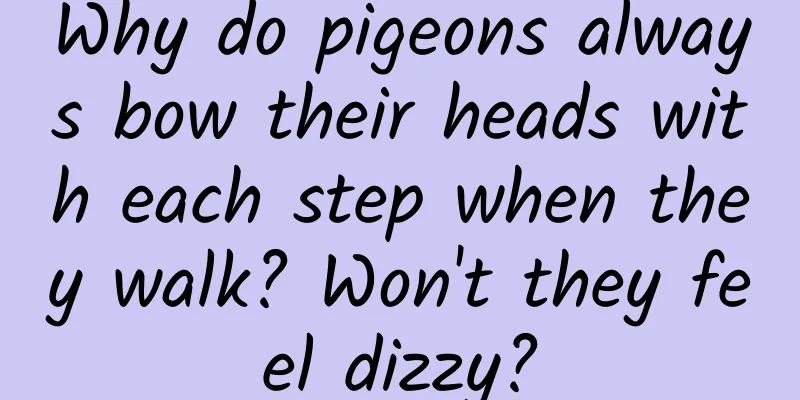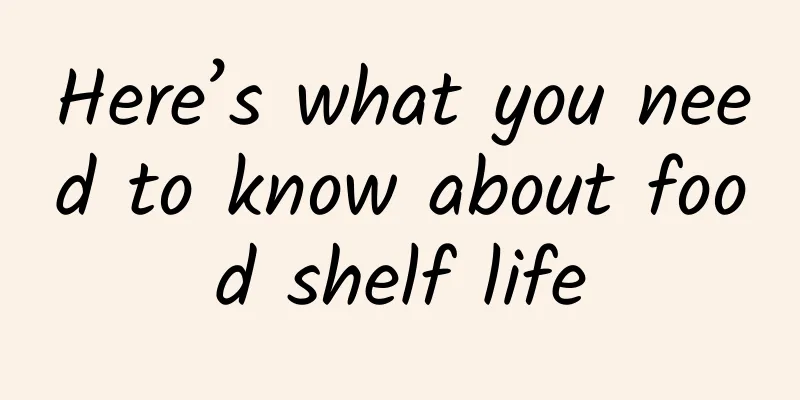Why do pigeons always bow their heads with each step when they walk? Won't they feel dizzy?

|
Review expert: Ran Hao, a well-known popular science writer One day in 1978, a group of researchers at the Queen's University Laboratory in Canada gathered around a plexiglass box with a treadmill... What were they doing? Watching a pigeon walk on it. Behind this funny scene was an attempt to answer an age-old question: Why do pigeons nod their heads when they walk? Source: soogif In the square, we often see pigeons with their heads down, pecking at bread crumbs on the ground, as if they are moving to some secret beat, as if they are participating in a silent disco party. What are they doing? When pigeons walk, do they start head first? Nearly a century ago, American psychologists Knight Dunlap and Orval Mowrer denied that the movement of birds caused their heads to shake in their article "Head Movement and Eye Function in Birds" published in Biology. In 1978, the experimental team of Dr. Barrie J Frost completely resolved the controversy. The most advanced high-speed camera at the time was used in this research experiment, which could shoot 64 frames per second. Dr. Barrie J Frost used the head, chest and feet of the pigeon as the anchor points for observation, which was enough to accurately record the nodding movements of the pigeon during movement. Dr Barrie J Frost loves pigeons Source: Prints and Photographs Division, Library of Congress After taking the photo, I indeed discovered the pigeon's silky "swaying" trajectory. Source: Internet pictures It can be clearly seen from the picture that the pigeon does not nod its head when walking, but instead keeps "pushing" its head forward. When walking, its head almost remains on the same horizontal line, with very little ups and downs. Analysis of pigeon walking movements captured by high-speed camera Source: Foreign academic journals In short, a pigeon's head movement can be divided into two phases: propulsion and maintenance. If you think there may be errors in naked eye observation, the following data analysis can also prove this. The head is locked for a period of time, then quickly moves forward to a new "hold" position Source: The photodynamic basis of pigeon head shaking Of course, we think that pigeons nod when they walk because during the propulsion phase, the pigeon's head moves forward about 5 cm relative to the body, and then enters the holding phase, the head remains still and the body continues to move forward. Pigeons can complete head extension movements several times per second. This series of movements is too fast, but the human eye has limited perception of movement, so it is impossible to clearly see the pigeon's propulsion and holding movements. What we see is that the pigeon seems to be nodding continuously, which is actually our illusion. The role of pigeons moving their heads We often laugh at pigeons' odd gait, but the reality is that pigeons' behavior has everything to do with the way these birds see the world. The researchers found in the treadmill experiment that if the visual environment around the pigeons remained relatively still while they pranced on the treadmill, their heads wouldn't bob. Inversely, head propulsion helps the pigeons stabilize their view of the moving world around them. In other words, the still head gave the pigeon time to visually process its surroundings while it waited for its moving body to catch up, which was like a brief pause in the action. Although it may seem odd, the strategy is useful because the pigeons are able to see potential food and perhaps even enemies. But if the pigeons' heads moved at the same speed as their bodies, they would have a hard time keeping a steady image of the world on their retinas, and the scene around them would constantly shake in a chaotic mess. Source: cicc In addition, there is another interesting thing that can explain this conclusion: if you hold a bird or a chicken and walk straight forward, it will keep "nodding". As long as the world is moving for it, no one can stop its "nodding" head. Just a few years ago, someone made a "chicken head stabilizer" based on the characteristic of birds that their bodies move but their heads do not. This way, even when surfing or doing other extreme sports, the picture will not shake due to the cameraman's shaking. Comparison of the mechanisms of bird and human vision formation Of course, this visual trick isn't just a quirk of pigeon life. Humans do something similar, except instead of moving our heads as we move through space, we use rapid, erratic movements of our eyes, called saccades, to help fix our vision. Our eyes don't move in smooth, continuous motion. They actually jump from one place to another, and once the eye reaches the end point of a saccade, it stays there, albeit briefly, but long enough for the optic nerve to stabilize the image on the retina so that the brain can process it. But why can humans see their surroundings clearly when their heads are still, while birds can only form a stable field of vision when they keep moving their heads? Simply put, the bird's head is too small! The outermost layer of the human eyeball wall is a soft tissue composed of collagen and elastic fibers, called the sclera, while the outer layer of the bird's eyeball is a hard bone structure called the scleral ring, also called the scleral bone. This structure is like the "armor" of the eye. Although it can protect and support the eyeball, it also limits the movement of the eyeball. Bird eye structure and scleral ring Source: Zhihu There is a certain distance between human eyes, which makes our eyes have subtle visual differences when looking at objects. This difference can be keenly captured by our brain, thus forming a three-dimensional visual effect. Therefore, we can clearly perceive the three-dimensional shape of objects and their positions by rotating our eyeballs. Source: pixabay We can try an experiment ourselves: close only one eye and then touch an object with our finger. You will find that when you think your finger is about to touch an object, it is always just a little bit short. Only when you stretch your hand forward can you really touch the object. This feeling is especially obvious when you are not familiar with an object. This is because although a single eye can form a clear image, it cannot produce visual differences, which causes our brain to be unable to accurately judge the distance between objects and us. Birds' binocular vision overlaps very little due to the limitations of the scleral ring, which makes their vision closer to monocular vision and unable to form sufficient visual differences. Therefore, they cannot accurately perceive the distance between objects and themselves. For them, moving the head to change the perspective is a unique way to form stereoscopic vision and stabilize the field of vision. However, not all birds that walk on the ground nod their heads. Ducks, geese, swans, some owls and raptors, and penguins, for example, do not nod their heads. These species tend to have fairly short, broad legs, and they waddle or take small steps when walking on the ground, which may be one reason why some birds nod their heads while walking and others do not, according to Reinhold Necker, who studies bird physiology. Of course, birds are essentially dinosaurs that have evolved to this day, and they have a lot in common with their extinct cousins. Recent discoveries show that many dinosaurs, even Tyrannosaurus Rex, had feathers. So, can you imagine a Tyrannosaurus Rex running with its teeth bared and its head bobbing wildly? Who can say for sure? |
<<: Microphone in the universe: Why do scientists want to listen to the sounds of alien worlds?
>>: How to make a cup of coffee that keeps workers warm? Use these scientific methods
Recommend
Brand marketing and promotion techniques for the movie "Nezha"!
introduction A good brand story can establish bra...
Doujinbihuo Academy "Douyin Money-Making Account Revealed Course"
Through studying the course "The Secret of D...
Peipei's Dad "Pepei's Dad's Thinking Forum"
Peipei Dad's "Pepei Dad's Thinking F...
What are the Douyin store operation skills? Douyin store operation skills and practice
To open a store on the Douyin platform, you actua...
Video websites seek payment models, industry integration is an important path
No one can give a definite answer as to whether t...
100 event planning tools, how many do you know?
When you first start planning, your leader assign...
Poor sales of Samsung and Apple drag down Ericsson, making domestic mobile phones lambs to be slaughtered?
“-10%”. Ericsson's performance in 2016 can on...
It turns out there is a flower called Qingming Flower
For many people in the southern region, eating Qi...
CHJ Automotive is about to launch the Ideal ONE with a range of 1,000km. Can extended-range hybrid vehicles become the new favorite of the market?
Recently, CHJ launched its smart electric vehicle...
As the trend shifts from mobile Internet to artificial intelligence and human-computer interaction, will the living room be the next battlefield?
2016 was not a smooth year for China's color ...
How to improve user loyalty to products?
This is a "red ocean era". Due to the r...
A woman drank this tea for 2 years and the lining of her large intestine turned black! Many people use it to treat constipation
Expert of this article: Zhao Weitong, attending p...
How to formulate an event operation strategy!
All operating systems and organizations are only ...
Cutting out carbs? Eating salad? Avoid these 10 pitfalls when losing weight after the Chinese New Year!
Dumplings, glutinous rice balls, sweet and sour p...
Sony PS VR experience: comfortable to wear, but the controller is terrible
Although this is not the first time we have seen ...









